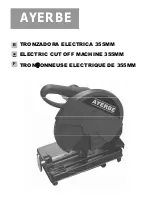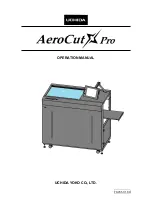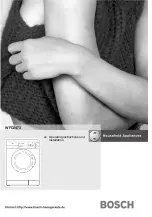
Construction and Function
12
3.2
Function
The basis of the heatable hoses is the adhesive hose (7) through which the hot melt
material flows. The hose consists of high-quality PTFE with a smooth surface.
Since the adhesive hose does not have great compressive strength it is covered by a
stainless steel fiber braid (6). The connection fittings of galvanized steel are pressed with
the entire construction.
The heating conductors (5) consist of high-quality heating conductor alloys that are
covered by a protective conductor braid. Fiberglass braid (4) that covers the heating
conductors is used as heat insulation.
The PTFE insulated brush shunts are coiled around this construction in a spiral shape.
A heat stabilizing silicone foam (2) with fine-pored cell structure covers the entire
construction that is protected by a polyamide protective braid (1) or a corrugated
protective hose. The connection sides of the hose are provided with stable temperature
end caps made of silicone.
A temperature sensor (Pt100) is installed between the heater and stainless steel fiber that
reports the current hose temperature to the control electronics.
Heatable hoses in the spray version also include a PTFE hose (12) for spray air.
3.3
Chemical resistance of adhesive hose
PTFE is resistant to almost all media.
Water will diffuse through the walls in minor amounts.
Attention!
When using hot melt materials containing fluorinated hydrocarbons, oils, alkali metals, or
halogens, have the respective manufacturer advise you about PTFE compatibility.
Unsuitable hot melt materials can damage the adhesive hose.
3.4
Temperature stability
The polyamide protective braiding ([1] in Figure 3.1/1) is stabile up to 160 °C. Local
overtemperatures can occur by bundling several heatable hoses or by touching hot
machine parts. For that reason, comply with the notes in Chap. 4.2.2.
Attention!
The maximum permissible temperature (given as T
max
on the type plate) may not be ex-
ceeded.
The too high temperatures causes the pressure load capacity of the heated hose to sink,
which can cause the hose to be damaged or destroyed (see also Chap. 2.2, “Technical
Data”.).
Summary of Contents for HB 5010
Page 10: ...2...
Page 14: ...Special security advice 6...
Page 16: ...Technical data 8 Figure 2 1 2 Location of type plate on the inside of the unit...
Page 28: ...Operation 20...
Page 40: ...Operation 32...
Page 57: ...Repairs 49...
Page 60: ......
Page 62: ...Table of Contents 4 Table of contents...
Page 64: ...Specific security advice 6...
Page 68: ...Technical Data 10...
Page 76: ...Maintenance 18...
Page 80: ......
Page 82: ...4 Inhaltsverzeichnis...
Page 84: ...Specific safety instructions 6...
Page 90: ...Construction and function 12...
Page 92: ...Technical data 14...
Page 104: ...What happens if 26...
Page 107: ...Accessories 29...
Page 110: ...Ersatzteillisten...
Page 115: ...Spare parts list 3 1 HB 5010 Tank System basic unit Fig 1 1 Spare parts for basic unit Part 1...
Page 128: ...Spare parts list 16 2 3 Spare parts bead and spray 19 9 Fig 2 11 Grip casing both versions...
Page 129: ...Spare parts list 17 11 Fig 2 12 Heat insulation half shell both versions...
Page 130: ...18 Spare parts list 10 Fig 2 13 Trigger and mounting parts both versions...
Page 133: ...Table of contents 21...
Page 136: ...Table of Contents 2...
Page 138: ...4...
















































